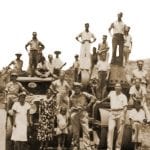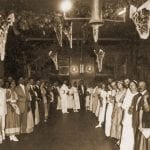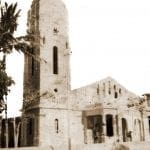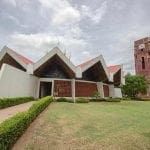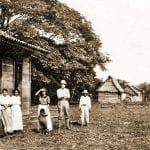
Santa Cruz: A Brief History
Photos are provided courtesy of José Gerardo Suárez Monge, author of “San José: 280 Years of History.” Suárez is a professional photographer and graphic designer with a degree in electrical engineering from the Tecnológico in Cartago, but his passion is collecting and analyzing historical photos — he has over 14,000. He has six books for sale, which are available at Librería Lehmann and the University of Costa Rica bookstore, or by calling 7062-3086 or 8794-7679. Facebook: Costa Rica Antigua e Inedita
The canton of Santa Cruz traces its history to the arrival of the Chorotega culture from Mesoamerica between the 6th and 7th centuries. The Santa Cruz area was controlled by the chieftain Diriá. The people were polytheists who worshipped three primary gods: Tipotani, Nenbithía an Nenguitamali.
The Chorotegas were a sophisticated culture with well-developed agricultural practices. They raised corn, beans, pumpkins, cotton, chile, tobacco and cacao, as well as fruit trees.
They also perfected an artistic technique using mud and stone to make domestic and cultural articles like censers, grinding stones and effigies of their gods.
Everything changed with the arrival of the Spanish, although the Chorotegas were great warriors and fought fiercely against the invaders.
A battalion of female warriors commanded by the warrior Biriteca actually defeated the Spanish in battle, but in 1524 the pre-Colombian era ended when all of Costa Rica came under Spanish domination. The Chorotegas did not survive the new diseases brought by the Spanish and the forced labor to which they were subjected.
There are various legends about the origin of the name Santa Cruz (“Holy Cross”). During the Spanish conquest, the cross came to be seen as a supernatural weapon, and it later served as a symbol of natives’ conversion from worship of multiple gods to veneration of one.
In 1814, Doña Bernabela Ramos Sequeira, the widow of Blas Moraga, donated four parcels of land in what is today the city of Santa Cruz. According to one story, she erected a large wooden cross on the patio of her house on a hill west of the city. People would reportedly say, “Let’s go to the Santa Cruz to celebrate Mass.”


